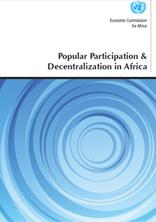Popular Participation & Decentralization in Africa

At the end of World War II, all but three African nations (Ethiopia, Liberia and South Africa) were ruled by some European State. Then the independence movement began: first in North Africa with Libya (1951), and over the next five years, Egypt, the Sudan. Tunisia and Morocco. The Sub-Saharan States soon followed, beginning with Ghana (1957) and, by 1990, 42 other countries. Being newly independent and largely poor, the thinking was that if a country could come up with a national plan for generating and investing a sufficient amount of funds in a manner consistent with macro stability, then that country would have met the pre-conditions for development. It would be a “State” (central government) — led process whereby “the flexibility to implement policies by technocrats was accorded price-of-place and accountability through checks and balances was regarded as an encumbrance” (World Bank, WDR, 1997). It was not an unreasonable strategy: national governments populated by good advisers and with external technical and financial assistance would put the country on the sure path to growth and development.
There was some progress in terms of indicators such as infant mortality rates, life expectancy, and adult literacy. There have also been many failures, and not just about the ability to achieve sustained growth and development. The failures have also been about environmental deterioration, loss of civil liberties, corruption and a poor record of delivering local public good and services-clean water, sanitation, education, health, housing, roads, and basic social services and safety nets.